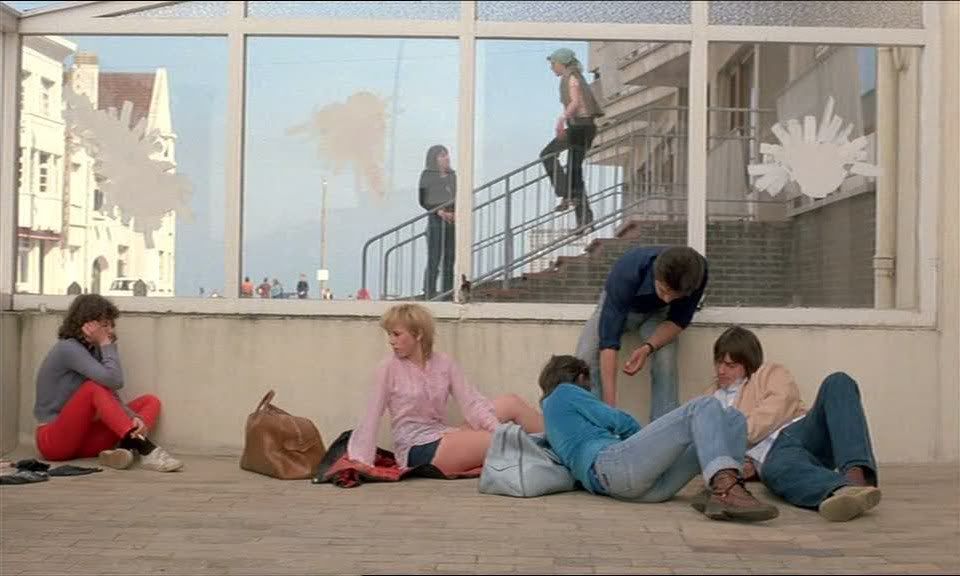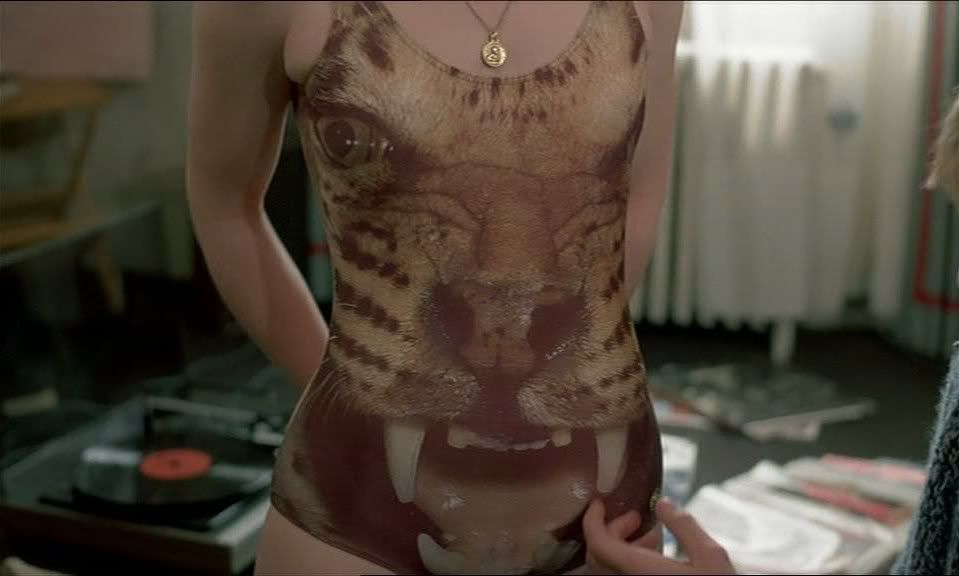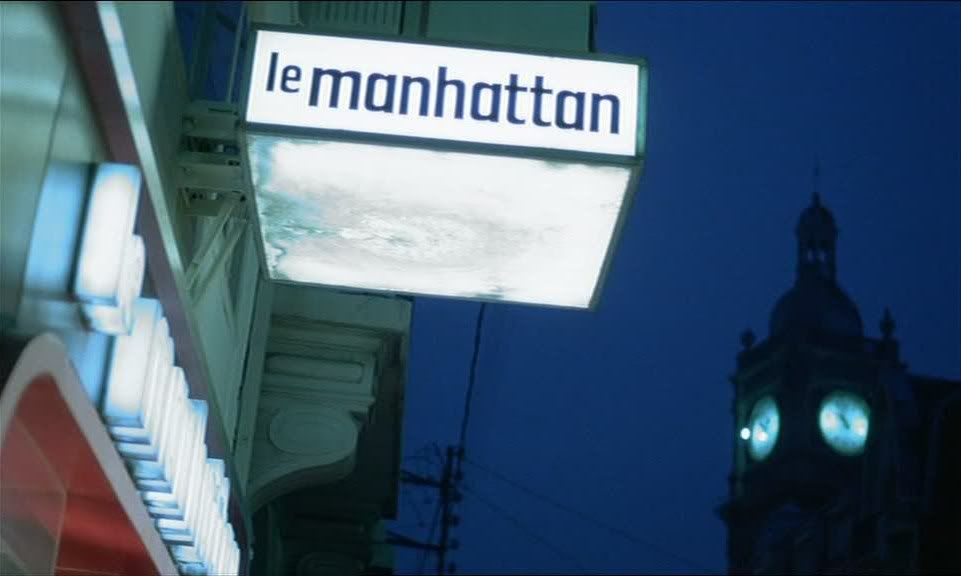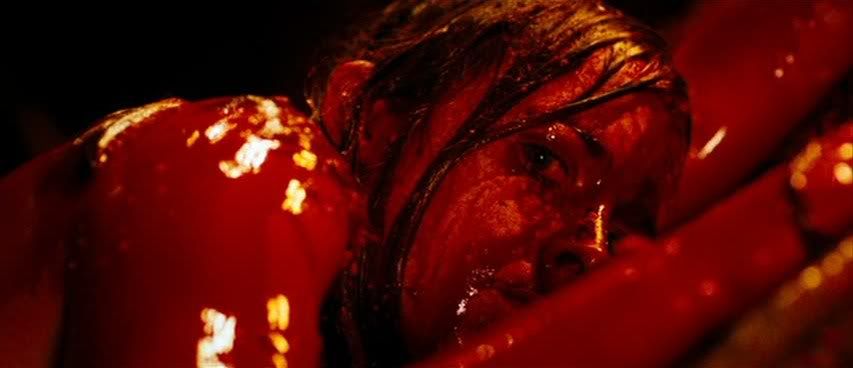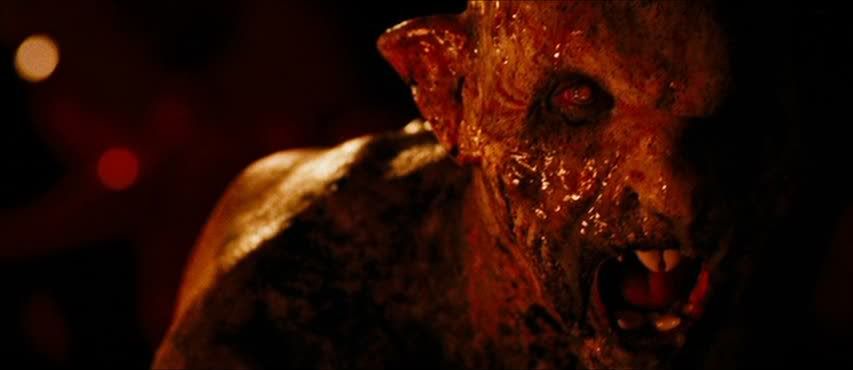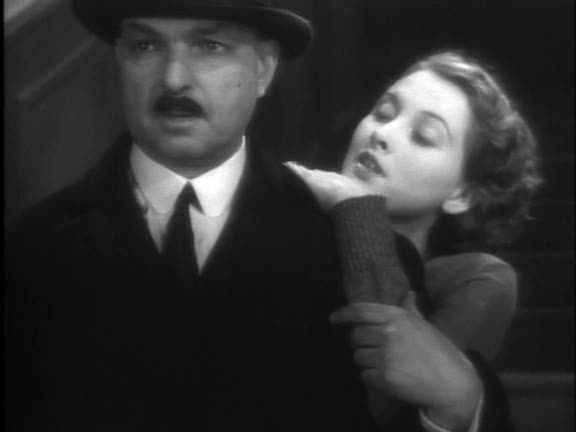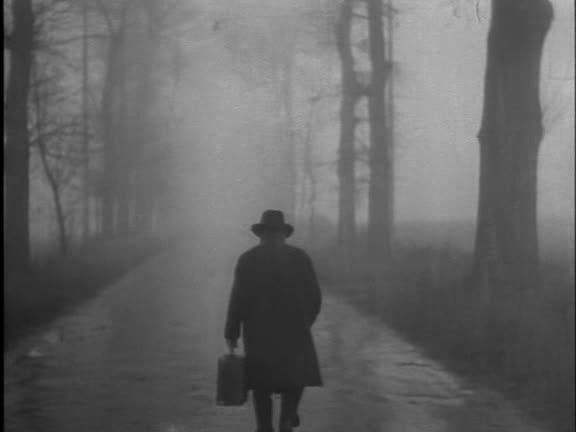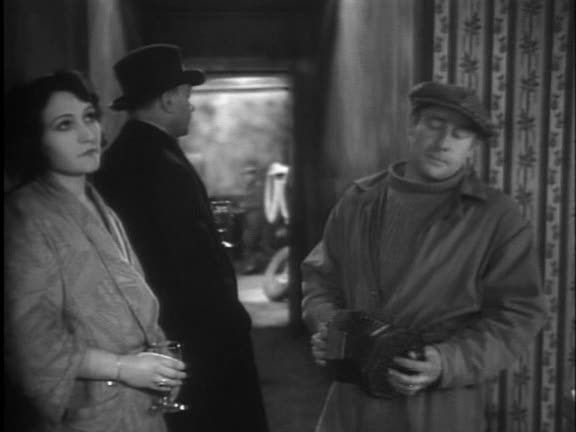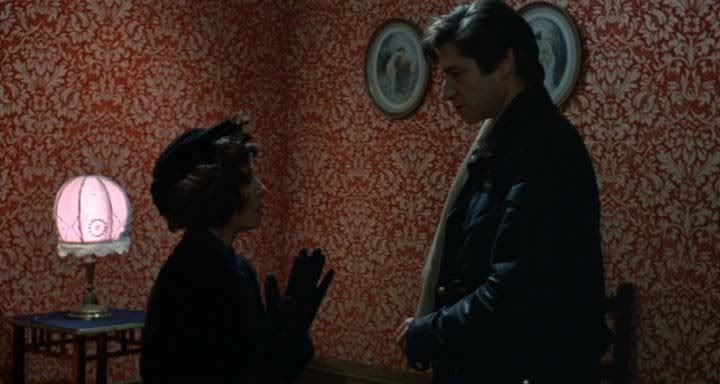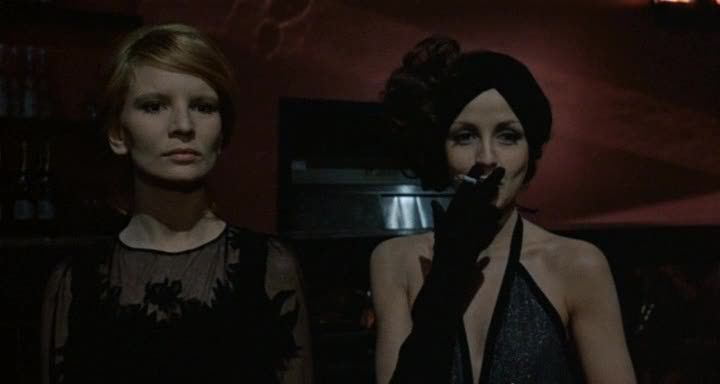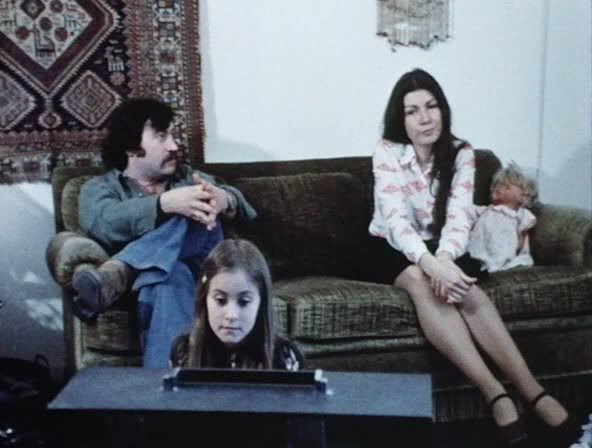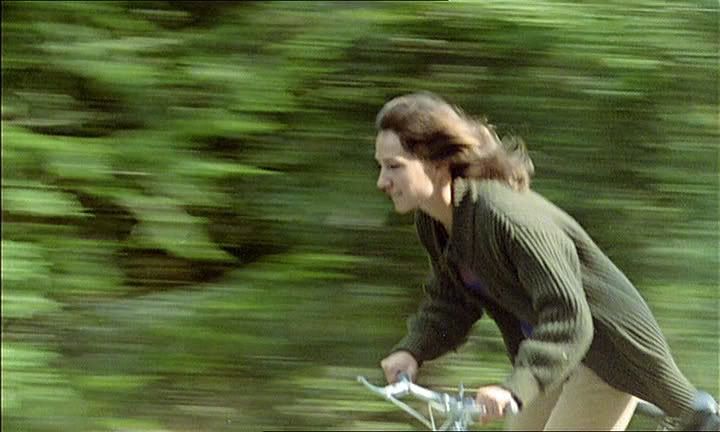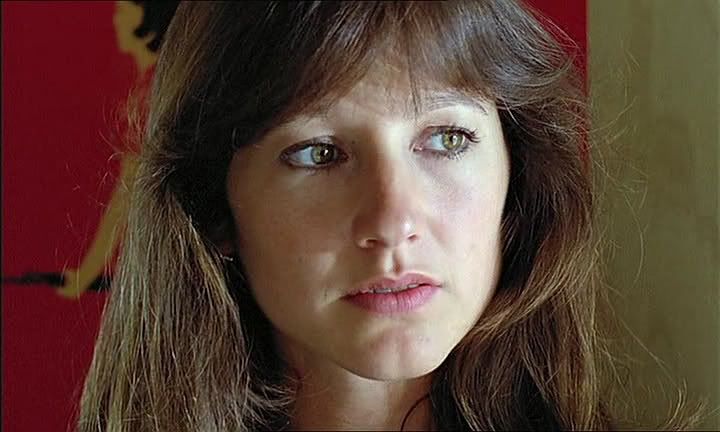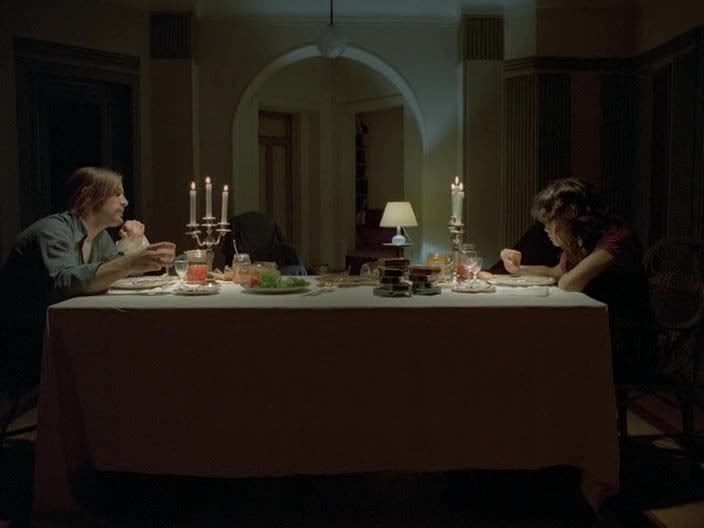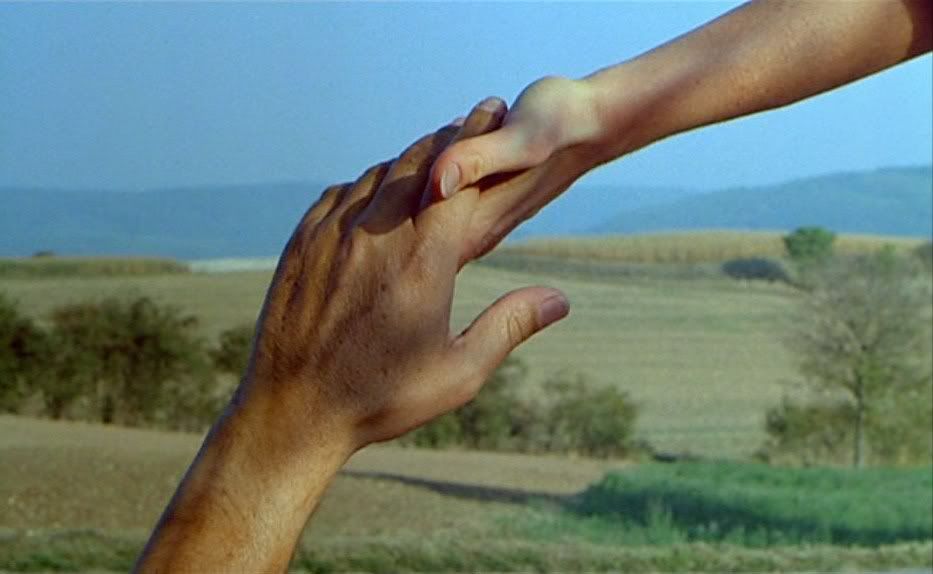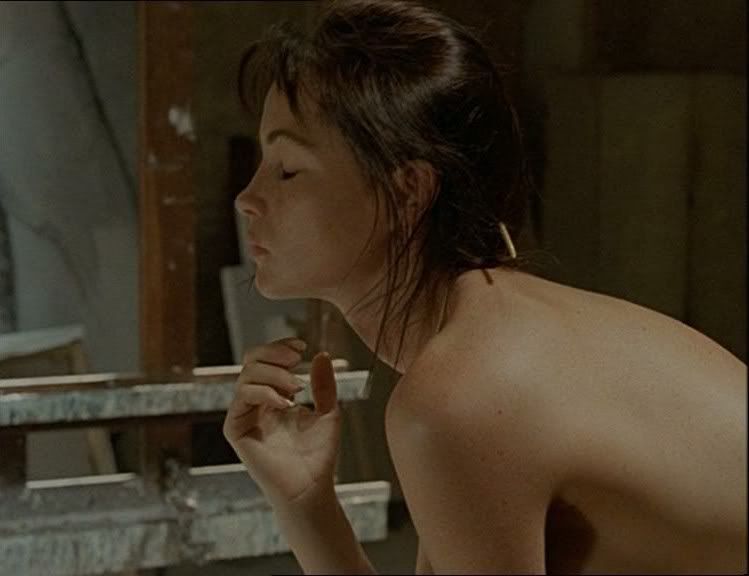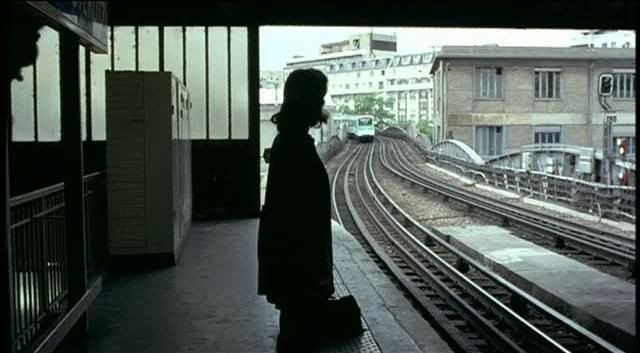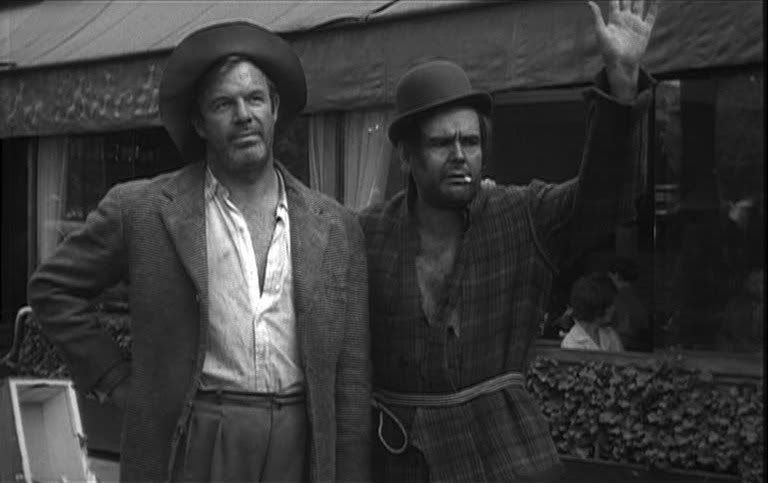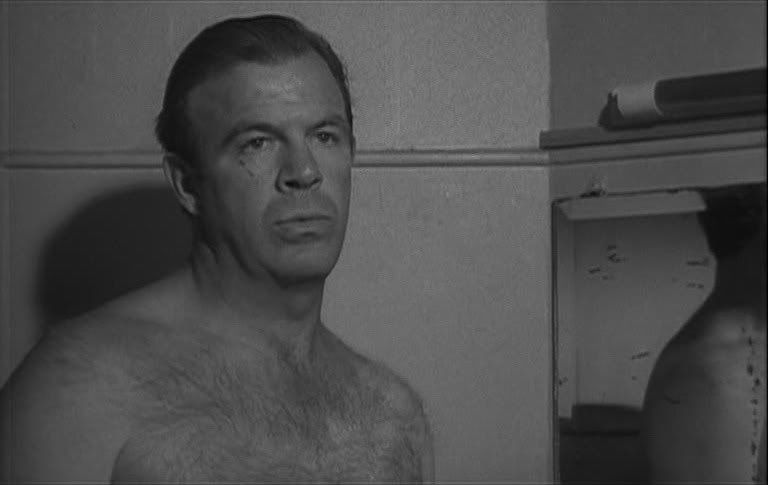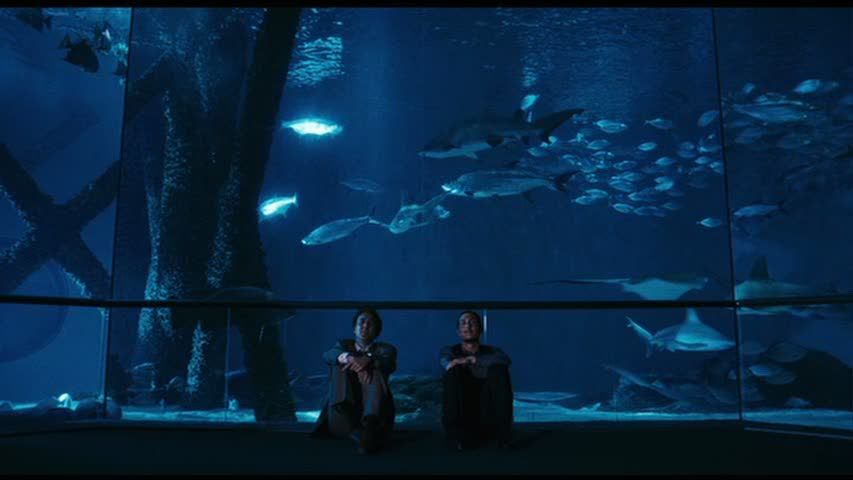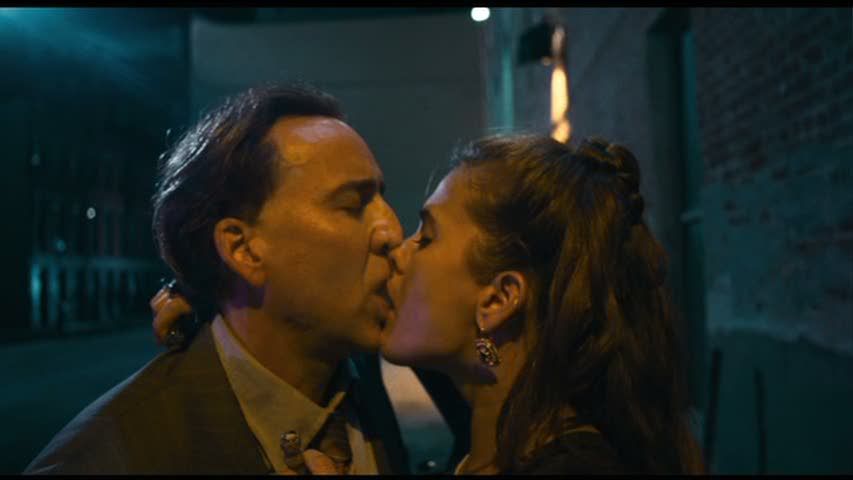
Apichatpong Weerasethakul is a great sensualist, a director who revels in the sensory and emotional qualities of a particular moment in time and the setting in which it takes place. His feature films are collections of these moments, strung together in such a way as to create a cumulative effect, a slow building-up of emotion and visual beauty. Phantoms of Nabua is a ten-minute short film that documents one such moment, and it's typically evocative and breathtaking. It is divided, roughly, into three segments, with little clear separation between them; rather, they flow into one another, each new section introducing a new wrinkle into the film's treatment of light and darkness. In the film's opening minutes, a village is struck by lightning multiple times, the white-hot strikes looking like fireworks being set off; it's ambiguous whether the streaks of white light are descending from above or spiking up out of the ground. It's frighteningly beautiful, the bright white lines illuminating the dark night, the strikes chaining together and sending out feelers to join with other streaks of lightning. On the soundtrack, the pops and electric sizzles of the lightning even sound like fireworks, making this a natural spectacle, a natural light show.
In the second section of the film, these opening images are projected onto a screen set up in the middle of a field where children are playing soccer at night with a flaming ball. The composition is complex, creating this layering where the images of the children playing are being pasted over the images of lightning. The shadowy silhouettes of the players are set off against the flickering light of the screen, the lightning flashes going off behind them, illuminating their bodies, projecting halos around the players. And the flaming ball rolls back and forth across the field, soaring through the air like a comet with a tail of fire flickering behind it, making whooshing noises with each graceful arc across the darkness.
The interplay of light and dark is gorgeous, as Weerashethakul frequently returns to dark emptiness before reigniting the night with the fireball's glow. He edits the scene into alternating stretches of light and darkness, juxtaposing a near-featureless dark area against a sudden burst of light as the fireball comes flying across the frame. On the soundtrack, the children's laughter and chatter is omnipresent, bringing energy and vibrancy to the isolation of the night. There's this glowing hive of activity and life at the center of the dark void, this small area of red glow, illuminated by the fireball and the sporadic flashes of the lightning on the cinema screen.
In the final segment of the film, the screen catches fire and is burned away, and slowly the game comes to a halt, all the children gathering around to watch the screen burn away, the flashing light of the projector showing through from the other side, the flames eventually shredding the screen until only its bare frame remains, like an empty goal. The metaphor is obvious but layered: the light is both destructive and redemptive, a source of creativity, a document of reality and a potentially abrasive, damaging force. The light both illuminates and eliminates. In the film's final minutes, Weerasethakul cuts in closer to the light of the projector, watching it head-on as, without a screen to project onto, the projector's flashes become abstract, disconnected from reality, occasionally producing wisps of imagery on the smoke wafting in front of the lens. It's darkly beautiful, this image of cinema removed from the tangible world of images: it is cinema projecting into the void, with any hope of communication or understanding removed, a lonely signal going out into the dark night.

There is a searching, hesitant quality to Apichatpong Weerasethakul's A Letter to Uncle Boonmee. It is a film in search of a subject, in search of itself. In the opening minutes, a voiceover repeats the titular epistle twice. The note is from Weerasethakul's own perspective, talking about a relative and the film he wants to make about this man, his Uncle Boonmee, who has apparently been reincarnated in various modern forms. It is a film very much about nostalgia and history, about the past, about the search for links between modernity and the past; this is a near-constant theme in Weerasethakul's work. The voiceover recounts how Weerasethakul wants to make a film about his relative, and how he's been seeking out houses that look like his uncle's residence. Implicit here is the distance between fiction and reality, especially as mediated by the passage of time. As Weerasethakul's camera roves across the interiors of various rural homes, his voiceover laments how his script describes one kind of house, while in the real village of Nabua there are other kinds of houses, and his ancestor likely lived in still another kind.
In one shot after another, Weerasethakul's camera repeats the same stately movement, a graceful arced tracking shot from left to right, tracing various empty interiors, looking over the objects and mementos that may be signs of someone's present life or artifacts of the past. There are photos and documents on the walls, and beautiful views of the jungle out the windows. There are also soldiers, digging in the yard, the rhythmic thunk of their hoes a repetitive and insistent beat on the soundtrack, later joined by the whirring buzz of a fan as one soldier lies on the wooden floor of a house, staring off into space. The voiceover describes how, in the past, there was some kind of military incident here, soldiers who chased away the town's residents as part of some long-ago war.
There's a profound ambiguity in the way the film creates a relationship between the images and the narration: are the soldiers depicted here meant to be the soldiers who forced the townspeople out of their homes in the past, or are they present-day soldiers whose appearance here only evokes the past? Another possibility exists as well, implicit in the metafictional framing device of the narrated letter; the soldiers are actors in the film Weerasethakul is making, since A Letter to Uncle Boonmee is explicitly a preparatory document for his latest feature, Uncle Boonmee Who Can Recall His Past Lives. In much the same way as Jean-Luc Godard would, in the early 80s, prepare video essays that contained the seeds of the feature films to follow, this short seems like an essay abstract for the forthcoming feature, suggesting themes and images that, one suspects, will be further developed in the longer work.

None of which suggests that A Letter to Uncle Boonmee is incomplete in itself, of course. It is, like Weerasethakul's features, elliptical and suggestive more than it is definitive, but that's the essential nature of his cinema, which seldom narrows its scope to a single meaning or a single narrative. His cinema is open-ended in all the best ways. Here, the slippage between past and present, between fictional artifice and the reality of the film-making process — Weerasethakul even mentions in the narration that he got British funding to make the film, bringing external economic realities into the picture, another gesture that seems to have been derived from Godard — resonates in interesting ways with the themes of memory and nostalgia. The pictures of ancestors, the rural homes that could represent any time in the last few decades or more, the soldiers who look much like soldiers do in any era. Everything here adds up to a powerful sense of timelessness. Time is suspended by Weerasethakul's weightless camera as it drifts through these mostly empty scenes, ruminating on absence — the absence of the past in relation to the present, the absence of Nabua's villagers, forced away from their homes, the absence of the titular uncle, long dead and sought in resurrected form in other people the filmmaker might meet.
Contributing to this sense of timelessness is the sumptuousness of the images. Weerasethakul's imagery encourages deep contemplation, encourages patience and quiet. As his camera drifts along, there is no rush, no urgency or narrative momentum, only the languid examination of wooden floors and walls, faded and aged photographs, the lush greenery seen outside, the pink haze of a mosquito net erected around a bed, the smoke billowing out of a furnace of some kind. Towards the end of the film, Weerasethakul's camera peers up at the tree branches swaying in the breeze, and above them the clouds drifting lazily by through a pale blue sky, shot from the perspective of someone lying on the ground. As this gaze drifts along, a cloud of insects hovers just below the tree canopy, buzzing in swarms, this shifting mass of dust motes dancing black against the blue of the sky. In this eerily quiet place, Weerasethakul summons the ghosts of history and ancestral memory to drift, silently and invisibly, through the splendor of the present.
[Note: Both of these films are available to watch online, Phantoms of Nabua for free and A Letter to Uncle Boonmee for just $1.]

